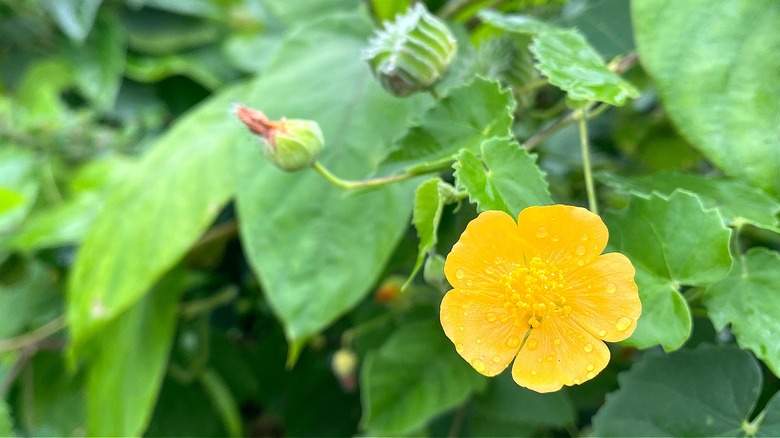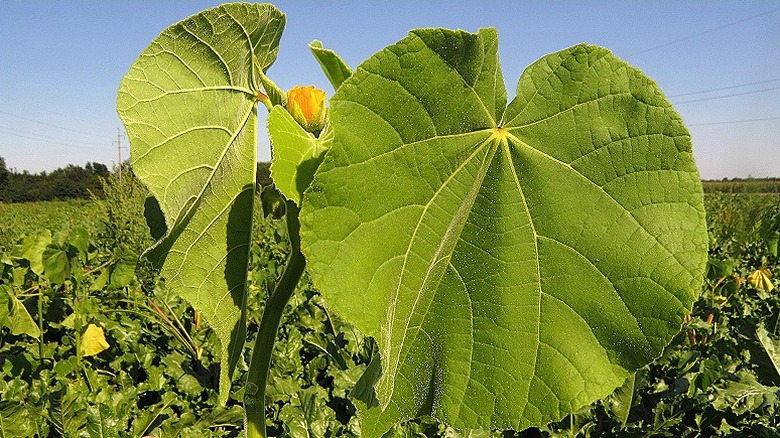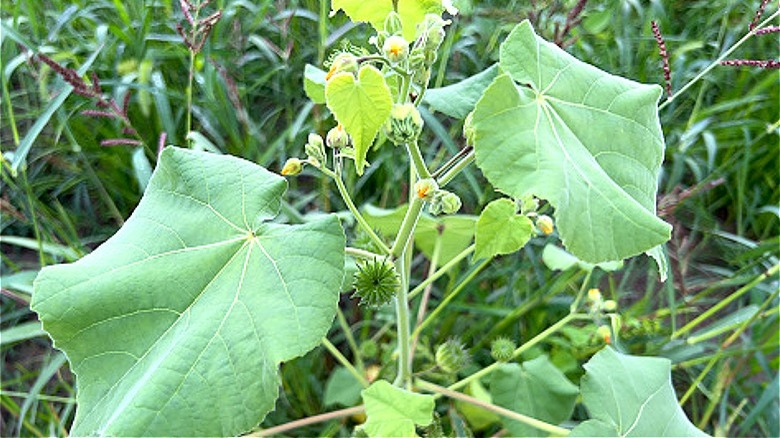How To Prevent The Giant Velvetleaf From Becoming A Problem In Your Yard
Initially introduced to North America as a fiber crop for making rope — a failed operation, in case you're curious — velvetleaf (Abutilon theophrasti) has, over time, transformed into an absolute menace for gardeners and their yards. Despite its remarkable flowers, this buttonweed (so-called due to the shape of its seed capsules) has been classified as an invasive species. Being extremely competitive, velvet weed significantly reduces crop yields, especially for corn and soybeans.
Moreover, this summer annual's allelopathic properties, or the propensity to reduce the growth of other plants while also housing viruses like turnip mosaic and tobacco streak, have made it unpopular among green enthusiasts. So, stemming velvet weed invasions is essential to ensuring a well-manicured landscape and effective yard care. If your yard is already infested with giant velvetleaf, however, you must take steps to prevent the formation and spread of its new seeds and opt for herbicide application where necessary.
How to identify velvet weed
Before delving into weed control methods, a necessary first step is identification. Unlike its fellow mallow brethren, including hibiscus and cotton, with their small sizes and larger flowers, velvetleaf's blueprint is a tall plant, capable of rising up to 8 feet. It has large, heart-shaped, hairy leaves with toothed edges that give it a velvety touch, which also explains its name. Usually ranging between 2 and 5 inches, these alternate leaves can grow to 10 to 12 inches in width.
Mature chingma plants bloom five-petaled yellow or orange flowers in midsummer, eventually giving way to cup-shaped fruits. At any given time, their fruit pods hold around three to nine brown seeds, which can lie dormant in the soil for almost 50 years. These seeds sprout when the topsoil warms up, and they can access adequate nitrogen. While mostly annual, some velvet weeds may survive as perennials, like those in hardiness zones 8 to 11.
How to control velvetleaf
As one velvetleaf plant can produce up to 17,000 seeds — all of which can survive in dormancy for some 50 years — you must undertake preventative steps lest the seeds approach surface level and sprout every time your yard's soil is disturbed. For gardens, crop rotation, particularly with row crops like soybeans and corn, can remove velvetleaf's seeds through tillage. Planting early winter harvest grains works as well, as the weed is prevented from developing seeds per its late summer cycle.
For your lawn, you may try mowing the grass sooner in the spring and closer to the ground to deal with small velvetleaf weeds that have yet to produce seeds. In contrast, larger buttonweed plants must be manually pulled out of the moist soil with their fibrous tap roots fully intact. Another alternative is to spray herbicide on the velvet weed if it's shorter than 4 inches. Ultimately, the key to controlling this weed is to identify and pull the giant velvetleaf early, to protect your yard from its invasive damage.


